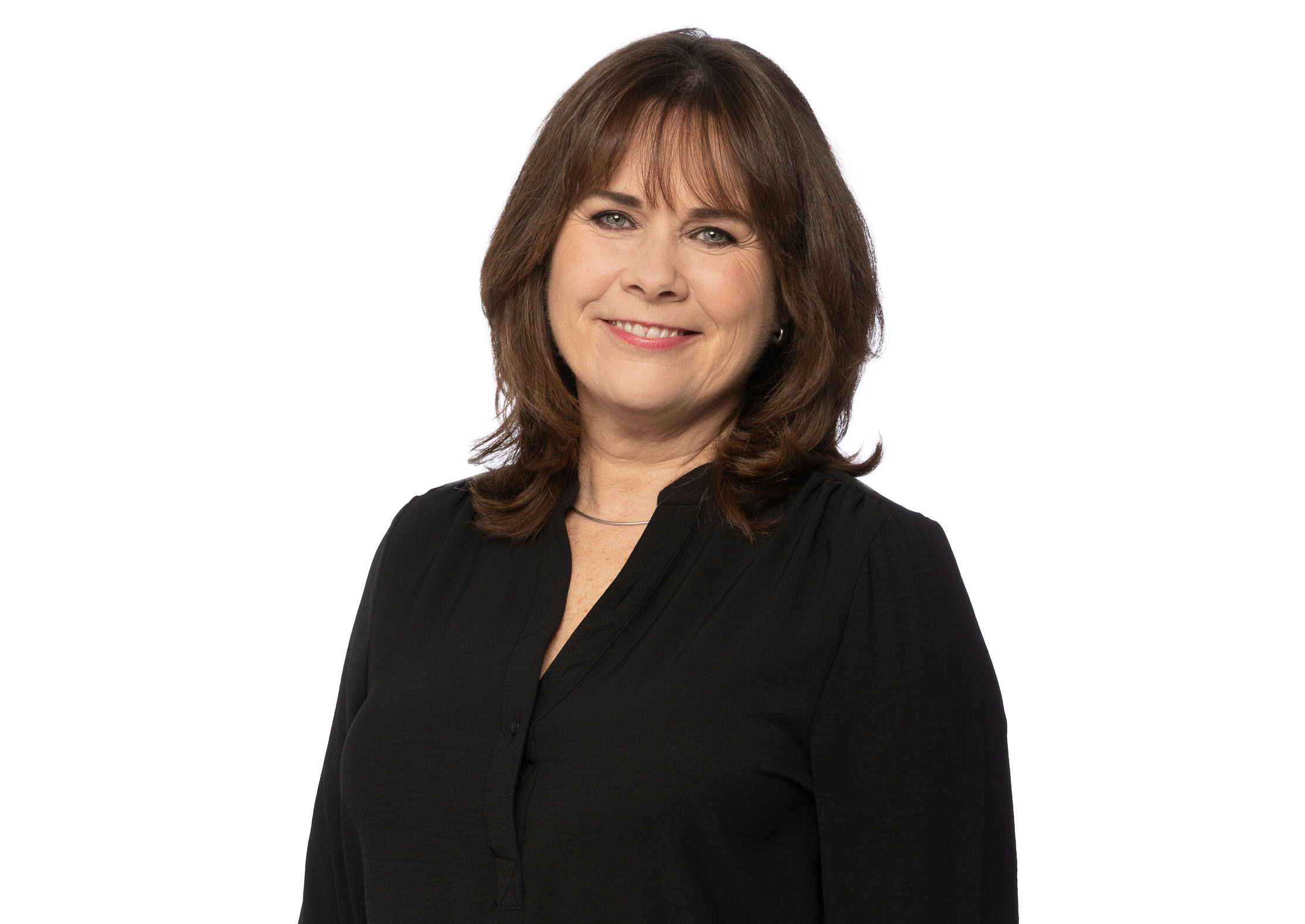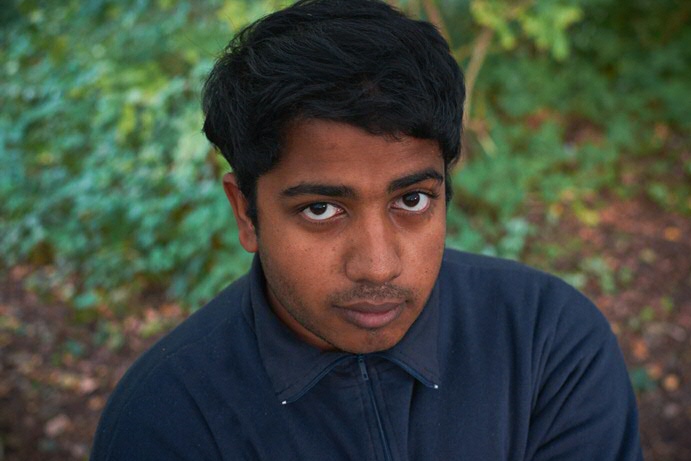Hoe klinkt Standaardnederlands? Luister naar Astrid Kersseboom
Astrid Kersseboom is de meest Standaardnederlands klinkende nieuwslezer. Dat blijkt uit onderzoek van promovendus Raoul Buurke van de Rijksuniversiteit Groningen, waaraan bijna 400 mensen uit Vlaanderen en Nederland deelnamen. Buurke doet onderzoek naar de invloed van standaardtaal op streektaal en dialecten. Om te bepalen welke dialecten het meest zijn beïnvloed door het Standaardnederlands, is een ijkpunt nodig: wat wordt tegenwoordig als het meest Standaardnederlands beschouwd?
Tekst: Marjolein te Winkel | Foto: NOS/Stefan Heijdendael

Kiezen tussen twee fragmenten
Buurke gebruikte hiervoor korte geluidsfragmenten van 24 nieuwslezers: 20 van de NOS en 4 van regionale omroepen uit het noorden van Nederland. Hij liet deelnemers aan zijn onderzoek steeds twee verschillende geluidsfragmenten beluisteren, waarna ze konden kiezen welke van de twee nieuwslezers het meest ‘standaard’ spreekt. Uit de analyse kwam Astrid Kersseboom als meest Standaardnederlands sprekende nieuwslezer naar voren, op de voet gevolgd door haar NOS-collega’s Jeroen Overbeek en Jeroen Tjepkema.
Kleine verschillen
Buurke: “De uitslagen liggen behoorlijk dicht bij elkaar. De deelnemers gaven geregeld aan geen voorkeur te hebben. Ook uit de stellingen die de deelnemers hebben beoordeeld na het beluisteren van de geluidsfragmenten blijkt dat de verschillen vaak klein waren: de helft van de deelnemers gaf aan dat ze het lastig vonden om een keuze te maken. De vier nieuwslezers uit het noorden van het land klonken volgens de deelnemers wel minder Standaardnederlands dan de nieuwslezer van de NOS.” Bij de keuze tussen twee geluidsfragmenten waren voor de meeste deelnemers de klank van klinkers, medeklinkers en de intonatie van invloed. De woordvolgorde en de woordkeuze van de presentatoren was voor slechts een kleine groep mensen van belang.
Wat is Standaardnederlands?
Standaardnederlands is het begrip voor het Nederlands dat wordt gesproken in het onderwijs, de media, de rechtspraak, het bestuur en alle andere sectoren in het openbare leven. Standaardnederlands verandert voortdurend: er komen nieuwe woorden bij, er raken woorden in de vergetelheid en ook de uitspraak verandert. Zo is de uitspraak van nieuwslezers van het Polygoonjournaal uit de jaren vijftig van de vorige eeuw heel anders dan die van de nieuwslezers van nu.
De taal die iedereen begrijpt
Buurke legde de deelnemers ook een aantal stellingen over het Standaardnederlands voor. Hieruit blijkt dat de meerderheid van de deelnemers vinden dat Standaardnederlands niet per se de taal is die iedereen spreekt, maar wel de taal die iedereen begrijpt. Voor ongeveer de helft van de deelnemers is Standaardnederlands correct Nederlands, en behoort het niet tot een specifieke regio in Nederland - ook niet alleen tot de Randstad. Een zachte ‘g’ hoort volgens de meeste mensen bijvoorbeeld niet tot het Standaardnederlands. Buurke: "Dit is opvallend, want de zachte 'g' is gangbaar in een groot deel van Nederland en Vlaanderen."
Vervolgonderzoek
Buurke gaat in het vervolg van zijn onderzoek kijken hoe dialecten en streektalen in het noorden van Nederland zijn veranderd, specifiek ten opzichte van het Nederlands. Voor dit onderzoek spreekt Astrid Kersseboom, als vertegenwoordiger van Standaardnederlands, een lijst met woorden in. Dezelfde lijst met woorden wordt vertaald naar het lokale dialect van Friese en Nedersaksische sprekers. Buurke gaat deze uitspraken kwantitatief met elkaar vergelijken. Op basis daarvan kan hij vervolgens bepalen of dialecten qua klanksysteem meer op het Nederlands beginnen te lijken. Er zijn al aanwijzingen dat dit een doorlopend proces is onder de dialecten, maar Buurke kan dit met hulp van moderne technieken en experimenten heel nauwkeurig meten. Na afloop van het onderzoek kan hij een voorspelling doen over waar het dialect het snelste zal verdwijnen of juist het langste zal blijven.
“Er sprankelt iets in haar stem”
Astrid Kersseboom presenteerde van 2004 tot 2021 het NOS Journaal. Sinds begin 2022 presenteert ze het NOS Radio 1 Journaal. De manier van praten van Kersseboom viel al vaker op, ook buiten de context van het onderzoek van Buurke. Onlangs nog roemde taalwetenschapper René Appel in het radioprogramma De Taalstaat op NPO Radio 1 het taalgebruik van Kersseboom. Ze gebruikt volgens Appel passende spreektaalvormen. Zo zegt ze ‘goeiemorgen’, en niet het meer formele ‘goedemorgen’. "Ze is duidelijk en legt goede accenten. Die zijn belangrijk om een boodschap over te brengen." Appel noemde haar stem plezierig, helder en vriendelijk. "Er sprankelt iets in haar stem", zei hij in de uitzending .

Meer nieuws
-
18 november 2025
Een wifebeater? Hoe taal schadelijke ideeën versterkt
-
03 november 2025
Menopauze in perspectief: Hoe de media onze beleving beïnvloeden
-
23 oktober 2025
Negen wetenschappers van de RUG ontvangen Vidi-beurs
